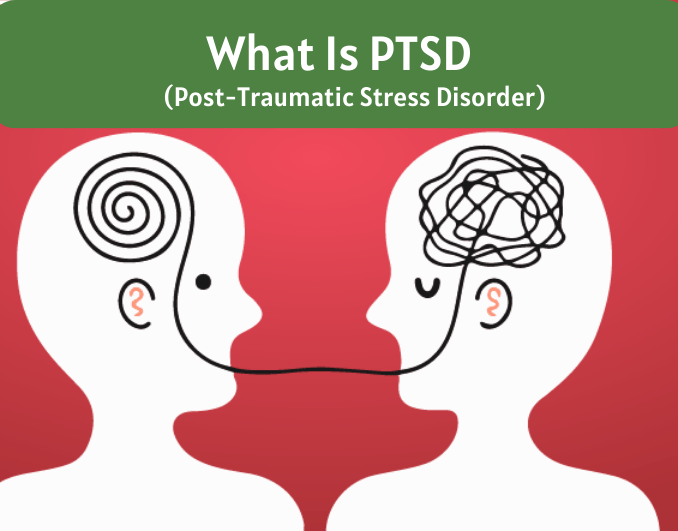Introduction
PTSD (Post-Traumatic Stress Disorder) is a mental health condition that can affect anyone who has experienced a traumatic event. While it’s natural to feel scared and anxious during and after a traumatic situation, some individuals may find it challenging to cope with the distressing emotions, leading to the development of PTSD. In this article, we will delve into the world of PTSD, its symptoms, and treatment options, and explore the underlying causes. Understanding this condition is vital to offer support and compassion to those who may be suffering silently.
1. What is PTSD?
At its core, Post-traumatic stress disorder (PTSD) is a psychiatric disorder that develops in response to a traumatic event. This can be anything from combat exposure, natural disasters, physical assault, to serious accidents. The disorder can manifest immediately after the event or take weeks, months, or even years to surface.
2. Symptoms of PTSD
PTSD is characterized by a wide range of symptoms that can significantly impact an individual’s life. These symptoms are often grouped into four categories:
2.1: Intrusive Thoughts and Memories
One of the hallmark symptoms of PTSD is the involuntary re-experiencing of the traumatic event through distressing memories, nightmares, or flashbacks. The individual may feel as if the trauma is happening all over again, causing intense fear and anxiety.
2.2: Avoidance
People with PTSD often try to avoid anything that reminds them of the traumatic event. This could include avoiding certain places, people, or activities, and even emotional numbing to prevent the triggering of distressing memories.
2.3: Negative Changes in Thoughts and Mood
PTSD can lead to a shift in the individual’s beliefs and feelings about themselves and the world around them. They may experience persistent feelings of guilt, shame, or blame and lose interest in activities they once enjoyed.
2.4: Hyperarousal
Individuals with PTSD may exhibit an increased state of arousal, being constantly on guard and easily startled. This heightened sensitivity can lead to sleep disturbances, irritability, and difficulty concentrating.
3. Treatment Options for PTSD
The good news is that PTSD is treatable, and seeking professional help is essential for recovery. Several effective treatment options are available:
3.1: Psychotherapy
Psychotherapy, particularly Cognitive Behavioral Therapy (CBT), is a widely used treatment for PTSD. CBT helps individuals identify and change negative thought patterns and behaviors associated with the trauma, promoting healing and resilience.
Medication
In some cases, psychiatrists may prescribe medication to manage PTSD symptoms, such as antidepressants or anti-anxiety drugs. These can help alleviate feelings of anxiety and depression and improve overall well-being.
3.2: Eye Movement Desensitization and Reprocessing (EMDR)
EMDR is a specialized form of therapy that helps individuals process traumatic memories and reduce their emotional impact. It involves guided eye movements while recalling the traumatic event, facilitating healing.
3.3: Yoga and Meditation
Complementary therapies like yoga and meditation have shown promising results in reducing stress and anxiety related to PTSD. They promote relaxation and emotional balance, fostering a sense of inner peace.
4. Causes of PTSD

While anyone can experience trauma, not everyone develops PTSD. The risk of developing the disorder can be influenced by various factors:
4.1: Severity of the Traumatic Event
The intensity and duration of the traumatic event can play a role in the development of PTSD. Events that are perceived as life-threatening or cause intense fear are more likely to lead to the disorder.
4.2: Personal Resilience
Individual resilience and coping mechanisms can influence how someone responds to trauma. Those with stronger support systems and coping skills may be more resilient in the face of adversity.
4.3: Brain Chemistry
Research suggests that individuals with certain brain chemistry differences may be more susceptible to PTSD. Genetic factors and brain structure can also contribute to the risk.
4.4: Previous Trauma
Experiencing prior traumatic events can increase the risk of developing PTSD after subsequent traumas. Past unresolved traumas can intensify the impact of a new traumatic event.
Conclusion
PTSD is a complex mental health condition that can have a profound impact on an individual’s life. Understanding the symptoms, treatment options, and underlying causes is crucial in supporting those affected by this disorder. If you or someone you know is struggling with PTSD, remember that help is available. Seek professional assistance to embark on the path of healing and recovery.
FAQs (Frequently Asked Questions)
Q1: Is PTSD only common in military personnel?
No, PTSD can affect anyone who has experienced a traumatic event, including survivors of accidents, natural disasters, or violent crimes.
Q2: Can PTSD go away on its own over time?
While some individuals may see an improvement in symptoms over time, for many, PTSD requires professional treatment to achieve full recovery.
Q3: Can children develop PTSD?
Yes, children can develop PTSD after experiencing or witnessing a traumatic event. It’s essential to provide them with appropriate support and therapy.
Q4: Is it possible to prevent PTSD?
While it’s not always possible to prevent PTSD, early intervention and support after a traumatic event can reduce the risk of developing the disorder.
Q5: Can PTSD affect physical health as well?
Yes, PTSD can lead to physical health issues such as chronic pain, gastrointestinal problems, and cardiovascular disorders due to the body’s stress response.
Please Also Read This Article


